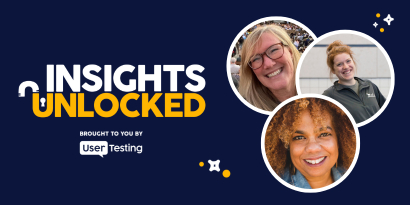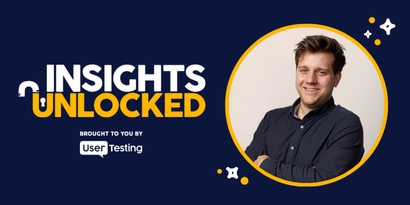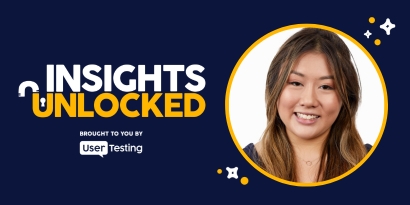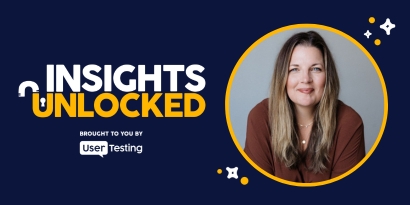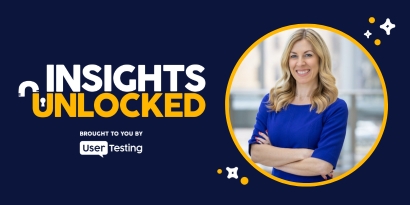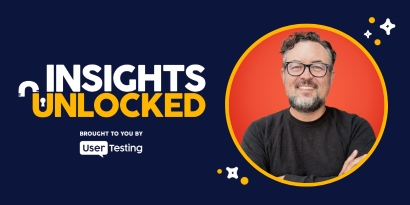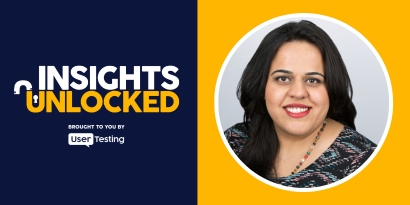
Episode 28 | January 24, 2022
How Wise scaled UX research to boost customer experience
How Wise scaled UX research to transform customer experience. Jennifer Lee shares strategies for democratizing insights and driving business impact.
Scaling human-centered UX research at Wise
“When the experience is smooth, you feel the delight. It’s what we should all be striving for.” — Jennifer Lee
What happens when a company brings in its very first UX researcher? At fintech leader Wise, it sparked a cultural shift that would reshape the company’s approach to product development, customer experience, and global innovation.
In this episode of Insights Unlocked, Jennifer Lee, UX research lead at Wise, shares her journey from being the company’s sole qualitative researcher to building a thriving, scalable user insights practice. The conversation dives deep into democratizing research, creating customer-centric strategies, and aligning design with business impact—all while navigating the challenges of a data-heavy fintech environment.
From one-person research team to company-wide transformation
Jennifer Lee didn’t walk into an established UX research team when she joined Wise. She was the UX research team.
“I actually joined as their first ever researcher,” she recalls. “I was the first qualitative researcher Wise ever hired.”
From day one, she was tasked with supporting a massive product launch—the multi-currency account, then known as Borderless. The product was technically sound, but Jennifer quickly saw an opportunity to elevate the user experience (UX) by incorporating customer feedback and usability testing into the development process.
“There hadn’t been a lot of experience design put into it at that point. It was just an idea. It was how do we technically make it work?” she explains. “So my first step was just discussing with the team—what are the problems we’re trying to solve?”
GUIDE
Competitive analysis with UserTesting
This guide provides ideas for how UserTesting can help you better understand your competitive differentiators and identify areas of opportunity according to your exact audiences. It covers how to conduct a competitive analysis in a general sense, as well as how to take advantage of UserTesting’s unique features.
Building a culture of research from the ground up
In a company driven by engineering and data, integrating qualitative research wasn’t easy. Jennifer had to not only show the value of UX research, but also empower others to get involved.
“People didn’t know what research was or how it applied to their work,” she says. “So I started running ‘research 101’ sessions for anyone in the company who was curious.”
These internal trainings helped product managers, engineers, and even HR teams understand the value of human insight. Over time, the company began to adopt user research tools like UserTesting, enabling more team members to conduct usability tests and gather customer feedback independently.
Key steps Jennifer took to democratize research at Wise included:
- Creating foundational “research 101” courses
- Teaching non-researchers how to write unbiased questions
- Introducing scalable tools like UserTesting for usability testing
- Developing training programs for cross-functional teams
- Hosting “watch parties” to review and discuss customer videos
"It doesn’t take much to speak to a customer and see the problems they’re having—and then make your product better based on that feedback.”
Why user experience matters more than ever in fintech
Wise was born from frustration with traditional banking. Founders faced high fees, poor exchange rates, and slow processes when transferring money internationally. So they built a product that worked like sending money to a friend, keeping transfers within countries to reduce costs.
“Wise was created because the banking system didn’t make it convenient,” Jennifer explains. “It was expensive, cumbersome, slow—and hard to use.”
In the fintech space, great UX isn’t just a bonus—it’s a competitive advantage. With customers increasingly exposed to best-in-class digital experiences, clunky interfaces can lead to churn fast.
“As soon as there are other competitors out there that do a similar function, if they do it well, retention starts to drop unless your experience matches up,” she says.
Making UX research resonate with stakeholders
One of Jennifer’s biggest lessons in scaling UX research was the importance of internal alignment. To build buy-in, she took the same approach with stakeholders as she did with customers: observing their behaviors and learning their language.
“A lot of it is about influencing and convincing your stakeholders around the value,” she says. “What language are they using? What makes them tick?”
In fact, she learned early on that using the word “research” didn’t always resonate with leadership.
“Our CEO doesn’t like the word ‘research.’ He prefers ‘speaking to customers,’ which often means the same thing,” she says. “It’s about finding the language that resonates.”
Jennifer focused on helping teams see how user research could influence key business metrics like:
- Conversion rates
- Customer retention
- Time-to-value
- App usage and engagement
- Satisfaction scores and customer loyalty
By demonstrating how UX research moved KPIs, she secured funding for tools, headcount, and further research initiatives.
“Everyone has questions that research can answer—they just might not know how to ask them yet.”
Scaling research across products and teams
As the impact of user insights became clear, Wise transitioned from a single researcher to a growing, embedded research team. Jennifer helped define research roles across different products, such as consumer and business offerings, to ensure equal focus and impact.
“Once you get a couple of researchers, models like embedding into product teams become much more viable,” she says. “That’s how you get insights distributed at a much higher level across the company.”
To keep momentum, she worked with product and design leaders to identify:
- Opportunity areas for research
- Gaps in customer understanding
- Segments underserved by existing designs
This led to more strategic research, deeper customer empathy, and improved usability across Wise’s expanding product suite.
Bringing customer experience to life through watch parties
One of Jennifer’s most innovative techniques for evangelizing customer feedback is her use of watch parties—group sessions where teams review user testing videos together.
“With remote research becoming more common, I record sessions and then host watch parties with the team,” she says. “It becomes a shared experience.”
These sessions promote deeper discussion, shared understanding, and fast alignment around customer needs. Teams often walk away ready to update designs, create Jira tickets, or reprioritize features.
“All it takes is five minutes of watching a user to get the product team thinking in a different direction.”
The future of UX research is seamless and empathetic
Looking ahead, Jennifer is most excited about reducing friction in digital experiences—especially in financial services.
“I look forward to not seeing people struggle, especially those who traditionally have a harder time—whether that’s older generations, people with disabilities, or anyone new to technology,” she says.
Her vision of human-centered design includes:
- Accessibility for all user segments
- Intuitive, seamless financial interactions
- Smarter UX tools that simplify complexity
- Deeper empathy across organizations
- Faster iteration cycles based on real feedback
Jennifer believes the future belongs to companies that put people first—and continually listen to their needs.
One insight can spark a hundred ideas
For Jennifer Lee, user insights are more than just data—they’re the spark for creativity, innovation, and truly human experiences.
“An insight is the start of possibly hundreds of ideas,” she says. “It’s a source of inspiration for branding, communication, innovation, and customer experience.”
Her story is a reminder that even a single researcher can start a transformation—one conversation, one test, and one insight at a time.
“I wish I had spent more time watching my stakeholders, learning what made them tick—because that’s where research really starts to resonate.”
